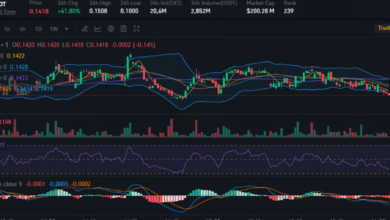How Data-Driven Insights Are Transforming Business Growth

Business growth doesn’t happen by gut feeling anymore—data’s steering the ship now. Companies tapping into data-driven insights are spotting opportunities, dodging pitfalls, and moving faster than ever. It’s like having a crystal ball, only better because it’s real and actionable. This shift is reshaping how decisions get made and success gets built. This post dive’s into how these insights are flipping the script on growth, step by practical step.
Collecting and Organizing the Right Data
It all starts with grabbing the good stuff—data that actually matters. Businesses need to hone in on what’s driving their goals, like customer habits, sales trends, or supply hiccups. Casting a wide net’s fine, but zeroing in on what ties to growth keeps things focused and cuts the clutter. The trick is knowing what to chase and what to skip. Quality beats quantity every time. Clean, accurate data—free of duplicates or gaps—sets the foundation. Relying on messy inputs is like building a house on sand; it’ll collapse under pressure. Regular checks and solid tools keep the stream steady, so decisions stand on firm ground instead of guesswork.
Where that data comes from counts, too. Pull it from sales logs, website clicks, customer feedback, or even social chatter—anywhere the business leaves a footprint. Mixing internal records with outside signals, like market shifts, paints a fuller picture. It’s about gathering enough pieces to see the whole puzzle, not just a corner. Organizing it seals the deal. Sort that data into clear buckets—think categories like revenue, engagement, or costs—so it’s ready to roll when needed. Smart systems or software can tag and store it without the hassle. A tidy setup means insights come fast, not after hours of digging through a mess.
Turning Data Into Actionable Insights
Raw data’s just noise until it’s crunched into something useful. Analysis is where the magic kicks in—spotting patterns, trends, or red flags that scream opportunity or trouble. Tools like dashboards or AI can sift through the piles, highlighting what humans might miss. It’s less about drowning in details and more about surfacing the gold. The context keeps it real. Pair those findings with what’s happening in the business—say, a sales dip during a holiday rush or a spike after a promo. That backstory turns cold numbers into a story that makes sense. Without it, insights risk floating off into nowhere, useless and ignored.
Sharing is the next step. Get those insights to the right people—managers, marketers, or frontline crews—in a way they can grasp. Ditch the jargon and go for clear visuals or straight-talk summaries. If the team can’t act on it because they don’t get it, the whole effort’s wasted. Testing seals the loop. Use those insights to tweak a campaign, shift inventory, or rethink pricing—then watch what happens. Small experiments show what works without betting on the farm. It’s a cycle: analyze, act, learn, repeat. That’s how data stops being a report and starts driving real moves.
Boosting Decisions With Data
Decisions fueled by data cut through the fog. Leaders aren’t stuck flipping coins or leaning on hunches—they’ve got hard evidence pointing the way. Say a retailer sees online carts abandoned; data might reveal checkout snags or shipping costs killing the vibe. That’s a fixable problem, not a mystery. Speed picks up, too. With real-time feeds, businesses pivot fast instead of waiting for quarterly recaps. Spot a trend, jump on it, and leave slower rivals in the dust. It’s not about perfection; it’s about moving quickly and smart with what’s on the table.
Risk takes a hit, too. Data flags trouble early—think shrinking margins or a product line tanking—before it spirals. Leaders can course-correct or double down with confidence, not panic. Companies that rely on data-driven trading strategies, such as Maven Trading, leverage real-time analytics to adjust their positions instantly, reducing exposure to risk while capitalizing on market shifts. It’s like having a heads-up on a storm; preparation beats scrambling every time.
Collaboration gets a lift as well. Teams align when everyone’s working off the same clear insights—no more silos or clashing agendas. Sales can sync with marketing and ops with finance, all chasing the same growth targets. Data becomes the glue that keeps the machine humming smoothly.
Scaling Growth With Long-Term Insights
Data’s not a one-off trick—it’s a growth engine over time. Tracking patterns year after year reveals what sticks and what fades, like which products turn loyal fans or which seasons tank hard. That long view shapes strategies that don’t just win today but keep winning down the road. Customers come into focus, too. Insights show who’s buying, why they’re hooked, or where they’re drifting off. Tailor offerings to fit those shifts—maybe a subscription tweak or a new feature—and watch retention climb. It’s about keeping the crowd happy while reeling in more.
Innovation gets a spark here. Spot a gap in the market or a customer itch nobody’s scratching? Data lights the path to new products or services that hit the mark. Businesses stop guessing what’s next and start building it, staying ahead of the curve instead of chasing it. Adaptability rounds it out. Markets flip, trends die—data keeps the business nimble. Regular check-ins on those insights mean strategies evolve with the times, not against them. Growth isn’t static; it’s a living thing, and data is the fuel that keeps it thriving through every twist.
Conclusion
Data-driven insights are rewriting the growth playbook, turning guesswork into precision. Collecting the right info, spinning it into clear actions, sharpening decisions, and scaling with a long lens—these steps unlock a business’s potential. It’s a shift that blends smarts with speed, keeping companies ahead in a crowded world. Embracing this approach isn’t just trendy; it’s the key to lasting, standout success.





